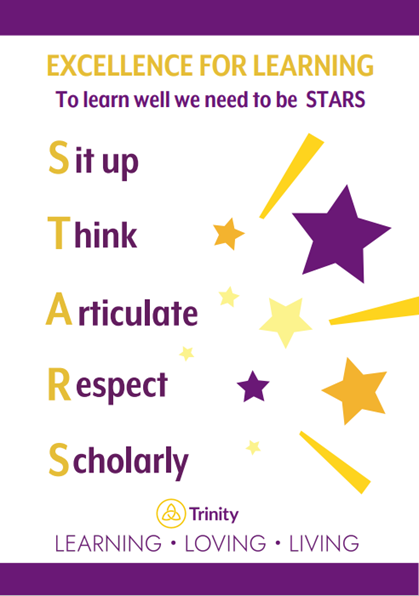Teaching and Learning
Rosenshein's Principles of Instruction
Rosenshine’s Principles of Instruction underpins teaching and learning at Trinity.
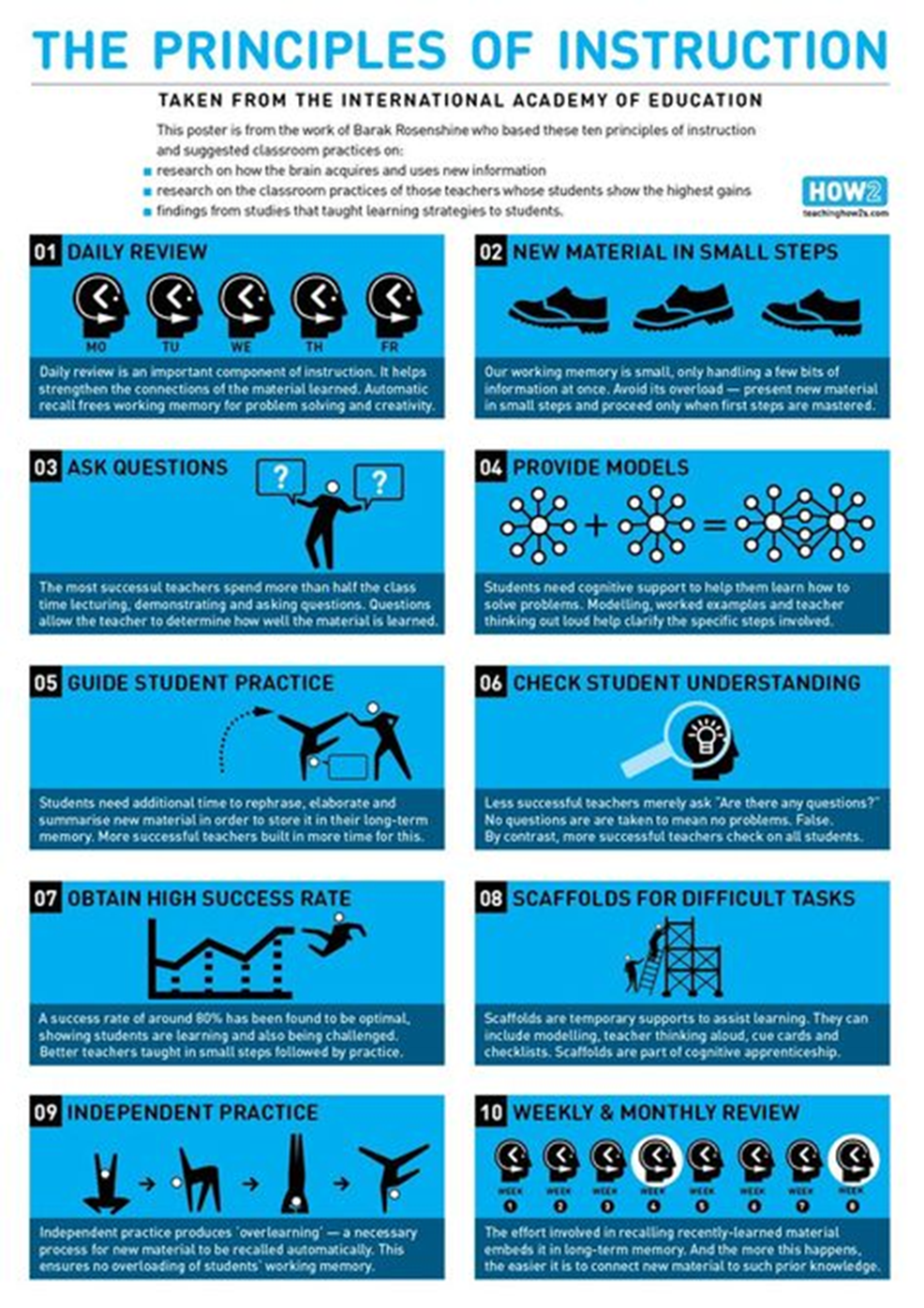
Retrieval Practice & Revision Revolution
Lessons at Trinity will usually start with some form of retrieval practice. We underpin this with our understanding of the importance of revisiting knowledge to prevent forgetting, as well as using spaced practice so that knowledge is revisited regularly. https://teachlikeachampion.org/blog/an-annotated-forgetting-curve/
We refer to Ebbinghaus’ forgetting curve to remind us that:
- as soon as you learn something, you begin forgetting it almost immediately.
- the rate of forgetting is often shockingly high; a few hours after learning something, people routinely remember only a small fraction of it.
- each time you practice recalling what you know, the rate and amount of forgetting is reduced somewhat.
- retrieving something back into working memory slows the rate of forgetting, but how and when the retrieval happens is important.
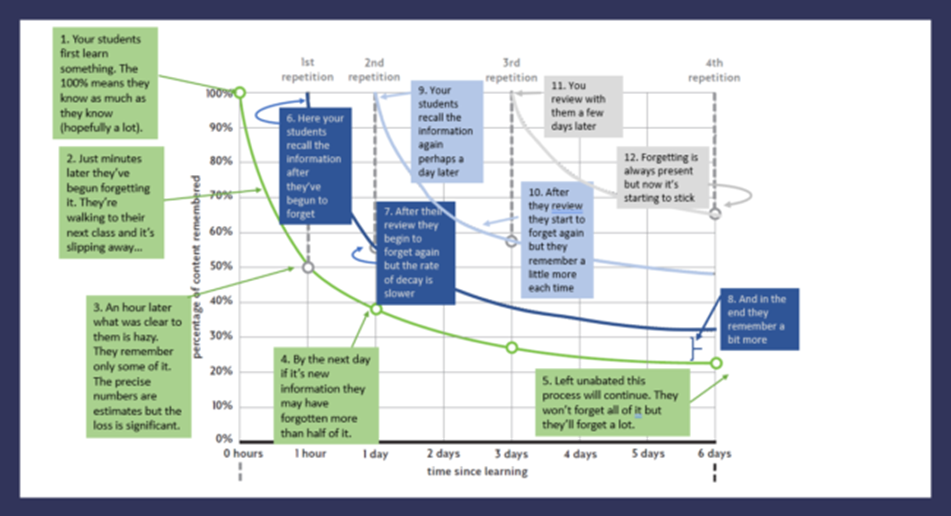
Revision Revolution https://www.youtube.com/watch?v=CB7SPPuY5Bs
Ensuring pupils are learning and remembering powerful knowledge is key to their success at Trinity. Our work on the Revision Revolution aids pupil progress as we integrate study skills into lesson routines so that pupils encounter and practice them daily. Pupils learn and use revision techniques in class so that we are developing pupils who know how to do home study as a way to become self-regulated learners. Use the link below to learn the key concepts
Adaptive Teaching

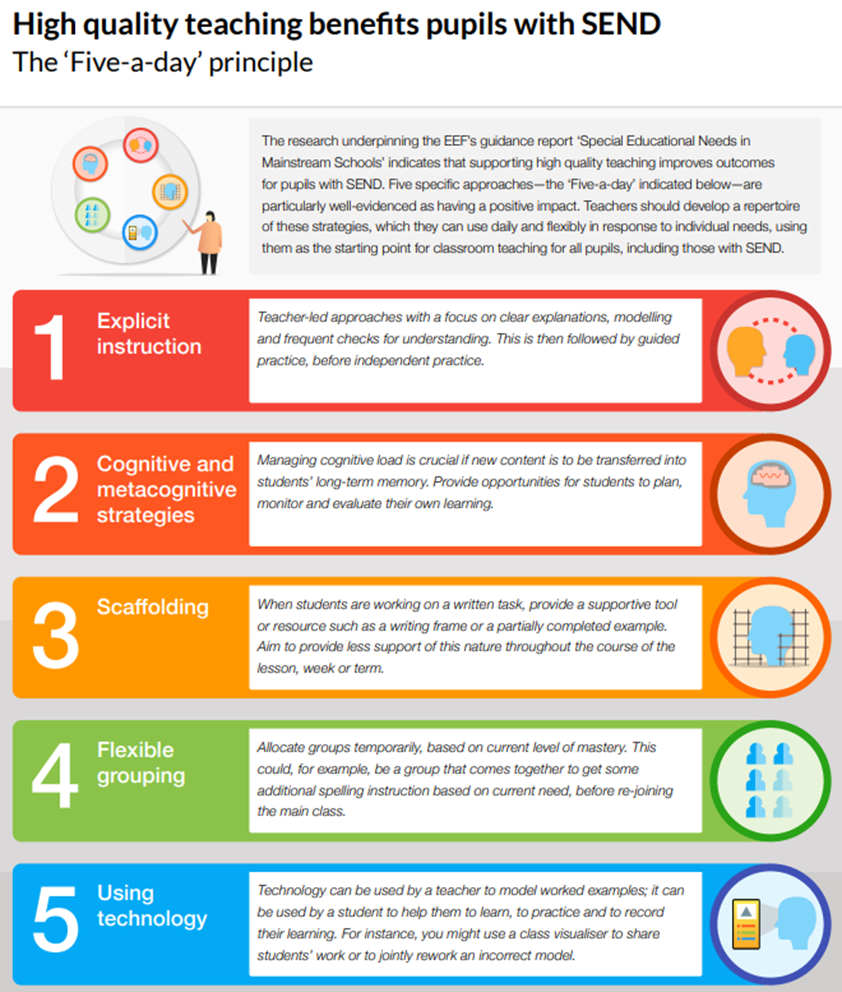
The Trinity Standards
We seek to develop knowledgeable, open-minded and insightful learners. We have therefore – through synthesizing current educational research – developed a knowledge-engaged curriculum, implemented through a model of seven key principles that make up the Trinity Standard for Teaching and Learning.
Please see below the principles we believe make excellent teaching and learning at Trinity. Under each strand there are defined elements that teachers should implement over time. It should be used as a point for discussion/framework for developing teaching and learning practice and not as a checklist. An observer should not expect to see every aspect in every session.
Observers may refer to subject specific guidance for teaching and learning at Trinity to supplement these elements.
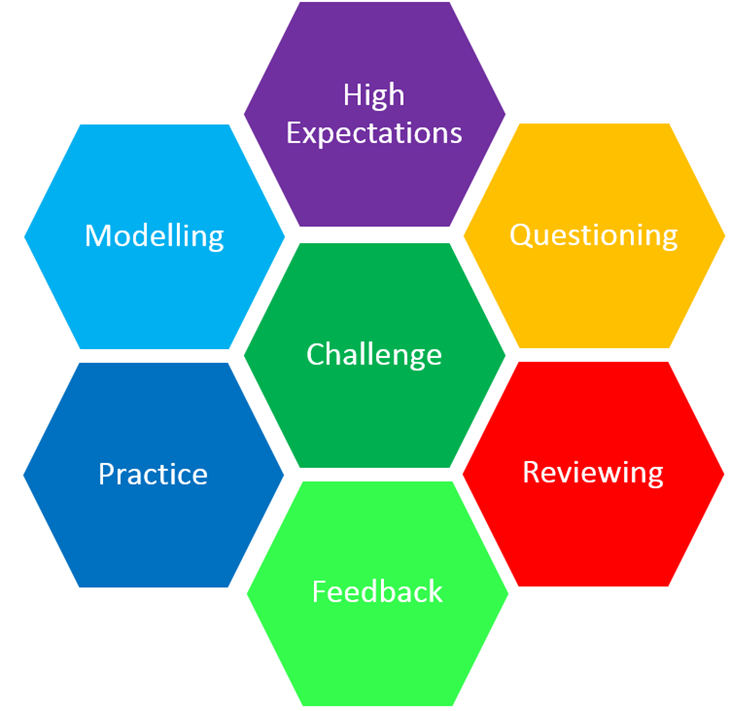
|
1.High Expectations and Behaviour for Learning |
|
|
1.1 |
No opt out – 100% participation |
|
1.2 |
Pace of session maintains pupil motivation and is responsive to pupil’s needs |
|
1.3 |
An appropriate amount of time is given to modelling, questioning and feeding back to pupils before practice begins with pupils’ attention maintained throughout |
|
1.4 |
Pupils have access to resources / prompts / scaffolds / books as soon as they enter classroom to ensure no learning time is wasted. |
|
1.5 |
Pupils respond appropriately and swiftly to transitions within sessions and are well routined – expectations have been put in place and demanded at each stage of the session |
|
1.6 |
Silence during key phases of sessions is expected – including during modelling and independent practice (where appropriate) |
|
1.7 |
Pupils know appropriate responses to key parts of session – when to put hands up / when to talk aloud / how to speak to partners / adults |
|
1.8 |
Positive body language is expected from all pupils at all stages of session (attentive body language, all pupils participating when asked to, no swinging on chairs) |
|
1.9 |
Rewards / praise given throughout session to motivate and reinforce high expectations |
|
1.10 |
Trinity Behaviour policy is adhered to by teachers and pupils |
|
1.11 |
Use of Trinity Language (age appropriate) reinforces expectations at all stages of session - ‘never give up’; ‘Terrific Trinitarian’; ‘open minded’; ‘knowledgeable’; ‘insightful’; ‘caring’; ‘principled’; ‘resilient’; ‘reflective’; ‘courageous’; ‘independent’ |
|
2.Challenge |
|
|
2.1 |
Top down teaching – one lesson purpose for all – appropriately scaffolded – use of ‘I, We, You’ model |
|
2.2 |
Cognitive load is balanced – tasks are not over sugar coated / too experiential |
|
2.3 |
High quality procedural tasks set where learning/knowledge is applied to other contexts |
|
2.4 |
Next steps/learning/extensions are clear, understood and always available to all pupils |
|
2.5 |
Challenge is consistently high |
|
2.6 |
Prior knowledge checks take place at the appropriate point in the lesson or term |
|
2.7 |
All children are set appropriate tasks to deepen their knowledge, including Focus Five pupils. |
|
3.Modelling |
|
|
3.1 |
Makes use of direct instruction – ‘Just tell them’ when introducing new concepts – experiential learning to take place after new learning is introduced |
|
3.2 |
Provides pre-prepared models pitched at or above national expectations and explicitly models how to use them |
|
3.3 |
Modelling is based on learning objective taken from Knowledge Organisers or Key Stage curriculum |
|
3.4 |
Before task begins there is explicit use of concrete – pictorial - abstract strategies/models to embed understanding and to guide practice for pupils |
|
3.5 |
Models ‘thinking aloud’ in clearly broken up into small, well-defined steps whilst demonstrating – to further embed metacognitive strategies |
|
3.6 |
Models making mistakes to avoid future misconceptions |
|
3.7 |
Use visualisers to show case pupils’ understanding and provide high quality models for the class |
|
3.8 |
Teachers guide and structure classroom talk, using techniques like open-ended questions, think-pair-share, and providing feedback to support pupils' oracy development. |
|
3.9 |
Teachers upgrade learner responses, repeating back sentences with more ambitious vocabulary. |
|
4.Questioning |
|
|
4.1 |
A range of questioning techniques are spread across as many pupils as possible |
|
4.2 |
Declarative questions used to recall, review and apply (predominantly closed responses) |
|
4.3 |
Procedural questions starting with how and why are used to apply, analyse, evaluate and create |
|
4.4 |
Questions are planned in advance, targeting specific learners, including focus five pupils, using ‘all hands up’ where appropriate |
|
4.5 |
Mixture of responses required – hands up/hands down/all respond/random responders/ Lollipop sticks in TP |
|
4.6 |
Questions are ‘anchored’ – enough time given / repeated to ensure pupils have time to think |
|
4.7 |
Questioning is used as an assessment tool to inform adaptive teaching. |
|
5.Practice |
|
|
5.1 |
Guided practice is used (‘we’ section from gradual release model) and interwoven with questioning and modelling |
|
5.2 |
When appropriate, plan for collaborative practice – primarily in mixed prior attainment pairs, predefined by teacher, with clear roles defined. |
|
5.3 |
Opportunities for pupils to demonstrate knowing what they do/do not know at the guided practice stage with adapted resources deployed to promote independent learning |
|
5.4 |
Opportunities for independent practice through procedural tasks to embed new learning |
|
5.5 |
Teacher regularly circulates the room and support staff appropriately directed to check for understanding across all groups during stages of practice |
|
5.6 |
Clear strategy for vocabulary acquisition where key topic vocabulary is explicitly and consistently modelled |
|
5.7 |
Live marking according to the policy takes place to move pupils on |
|
5.8 |
Pupils feel comfortable expressing their ideas, asking questions, and explaining their thinking clearly. |
|
5.9 |
Opportunities for talk, including structured activities like paired talk, trios, speaking in role. |
|
5.10 |
Discussion opportunities, with clear guidelines, are given to support pupils to engage in meaningful exploratory talk, philosophical inquiry, and presentations. |
|
5.11 |
Practitioners identify and draw upon the mode of talk best suited to the learning at hand. |
|
6.Reviewing |
|
|
6.1 |
Sessions begin with review or recall of previous learning/knowledge/vocabulary taken from Knowledge Organisers |
|
6.2 |
Review of learning often ‘top and tails’ session |
|
6.3 |
During session links are constantly being made between prior and current learning – often elicited from pupils themselves |
|
6.4 |
Low stakes quizzes used – taking different format/style/order of questioning in order to interleave knowledge |
|
6.5 |
Spacing of knowledge recall through weekly/monthly/half termly cumulative reviews |
|
7.Feedback |
|
|
7.1 |
Whole class feedback/feed-forward given |
|
7.2 |
Live verbal feedback given and acted upon during session |
|
7.3 |
Live written feedback given and acted upon during the session |
|
7.4 |
Opportunities for self and peer assessment to agreed/predefined objectives/success criteria |
|
7.5 |
Acting on feedback is modelled to pupils clearly – often under visualizer with actual pupil’s learning |
|
7.6 |
Feedback about the process rather than specific outcome is given to further develop metacognitive strategies |
|
7.7 |
Feedback takes place at all stages of session – particularly during guided, collaborative and independent practice stages – consistent checks for learning linked to the lesson purpose |
|
7.8 |
Feedback from previous learning is highlighted by teacher to bring sessions together over time |
|
7.9 |
Whole class feedback is precise and provides through actionable guidance verbally or in written comments eg. Does not just state “well done,” etc. |
STARS
